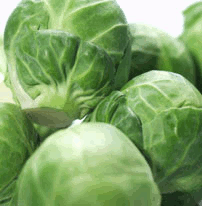Do dried fruits contain more nutritional value than fresh fruits?
The answer is simple. When you dry fruits, you lose more than just water. We have to remember that the nutrient loss in each fruit is different, but let's use cranberries as an example. Below is a comparison of one cup of dried cranberries versus one cup of fresh cranberries. The nutrient content of dried cranberries may come as very much of a surprise to you. The difference is even greater than the numbers would indicate since it takes much more than one cup of fresh berries to make one cup of dried.
| Nutrient |
Fresh Cranberries |
Dried Cranberries |
| Calories |
47 |
370 |
| Fiber |
4g |
7g |
| Vitamin A |
44 IU |
0IU |
| Beta Carotene |
28 mcg |
0 |
| Vitamin C |
13mg |
0.2mg |
| Magnesium |
5g |
6g |
| Potassium |
67 mg |
48mg |
| Phosphorus |
9 mg |
10mg |
Fresh cranberries also contain trace amounts of other vitamins and minerals.
The commercial process of drying fruit in large quantities is very hard on nutrients. Desirable components like beta-carotene, vitamin C, and many other nutrients are largely lost in the drying process. Fiber always remains, but on a cup-per-cup basis, calories and sugar actually go up. A cup of cranberries has about 47 calories; a cup of dried cranberries has about 363! We're all making a mistake when we routinely replace fresh fruit with its commercially dried equivalent.
With home dehydrating, however, it's a different story. A home dehydrator does nothing more than blow warm air up through the fresh fruit, and it's not nearly as harsh on the nutrients. (Many people like to start with fresh organic apple slices as a test). The fruit is still "dried" and lasts much longer than fresh fruit, but it isn't dried in the same way as a commercial processor would do it. Even though home dehydration is not a bad way to go from an overall nutrient standpoint, we all still need to be careful from the sugar and calories standpoint. Sometimes we might end up eating a lot more dehydrated apple slices than the amount of apple we would have eaten if we had a fresh, organic, whole apple in our hand. The chewing here and whole experience of eating can be quite different.
Send us your favorite recipes using the World's Healthiest Foods, so we can share them with others!
|





